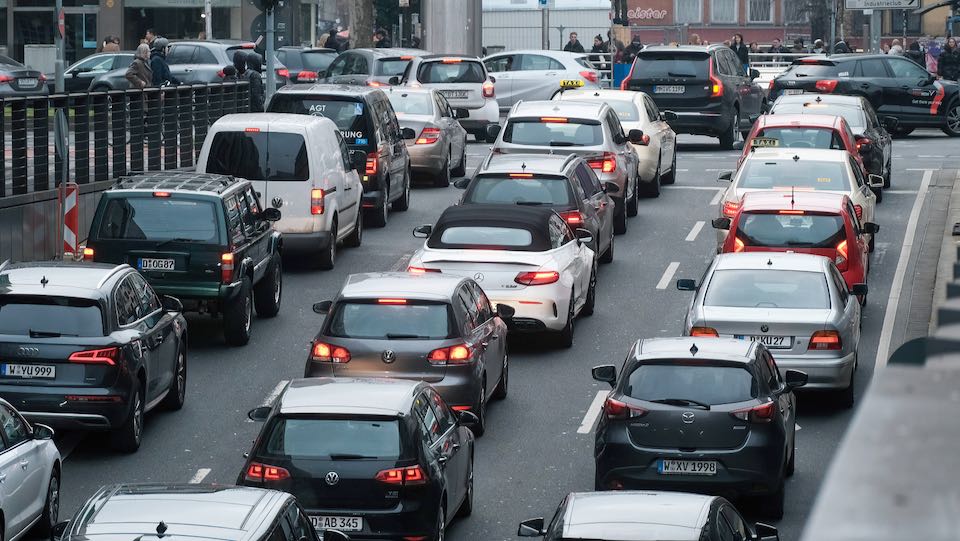Study: High levels of particulate matter endanger health worldwide

Particle pollution is still too high worldwide. According to research published in the journal The Lancet Planetary Health, the daily maximum value for PM2.5 particles recommended by the World Health Organization (WHO) was recently exceeded on 70 percent of all days on a global average. According to the report, only 0.001 percent of people live in places where the recommended annual maximum is not exceeded.
The group, led by Yuming Guo of Monash University in Melbourne, had determined particulate matter levels based on measured data and computer models for the years 2000 to 2019. “A wealth of evidence has supported the adverse effects of short-term and long-term exposure to ambient PM2.5 on human health, even at low PM2.5 concentrations,” Guo and colleagues wrote.
The team had taken particulate matter readings from 5446 stations in 65 countries as the basis for a computer model that replicates the global transport of substances through the air. Supplemented by data on weather, climate, land use and geography, the global daily PM2.5 particulate matter load was calculated at a resolution of about ten by ten kilometres. The researchers assume that their model also provides realistic values for regions where there are no measuring stations.
A global PM2.5 annual average of 32.8 micrograms per cubic metre of air was determined for the period 2000 to 2019. According to the model, the highest value was in East Asia (including China) at about 50, followed by South Asia at 37.2 and North Africa at 30.1. The lowest values were in Australia and New Zealand (8.5), the rest of Oceania (12.6) and South America (15.6).
Progress in Europe
The daily maximum value of 15 micrograms per cubic metre of air recommended by the WHO was exceeded on more than 70 percent of all days worldwide. In East and South Asia, it was exceeded on more than 90 percent of all days.
According to the analysis, there was a decrease in particle pollution in Europe and in some regions of North America and Africa. In Europe, the recommended daily maximum was still exceeded on almost 60 percent of all days in 2000. In 2019, it was exceeded on only 25 percent of all days. In Northern Europe, the values were significantly lower than in the other regions of the continent.
In Germany (in German), the WHO annual limit value for PM2.5 of 5 micrograms per cubic metre was exceeded at almost all of the approximately 200 measuring stations in 2022, according to the German Environment Agency (UBA) (in German). The average particulate matter values were thus at the level of the previous year. The limit value for nitrogen oxides of 10 micrograms per cubic metre recommended by the WHO was also exceeded at around three quarters of all measuring stations in 2022.
Seven million deaths annually
PM2.5 is the term used to describe particulate matter with a diameter of less than 2.5 micrometers. PM2.5 particles can sometimes penetrate into the alveoli of the lungs and into the bloodstream.
According to WHO figures, around seven million people die prematurely each year as a result of air pollution. According to data from the EU environmental agency EEA, in 2020, at least 238,000 premature deaths in the EU alone will be attributable to particle pollution. In 2022, there were about 28,000 premature deaths in Germany related to excessively high concentrations of particulate matter. Air in cities has a particularly negative impact on the health of residents.
Air pollution also causes lasting health problems and significant costs to the health sector, according to the EEA. Long-term exposure to particulate matter can lead to cardiovascular disease and lung cancer, among other things.
Heating and traffic
According to the UBA, particulate matter is produced in road traffic, power and district heating plants, furnaces and heating systems, as well as in metal and steel production. It can also originate naturally, for example, as a result of soil erosion. In urban areas, road traffic is the dominant source.
Another important source is agriculture: emissions of gaseous precursors, especially ammonia emissions from livestock farming, also contribute to particulate matter, according to UBA.
WHO reduces limit values
The WHO had lowered the recommended limit values for PM2.5 particulate matter in 2021 (in German) because studies had shown how much health suffers from air pollution. The guideline value for average annual exposure was lowered from 10 to 5 micrograms per cubic metre of air.
Under the European Green Deal, EU air quality standards are to be adapted to the WHO recommendations. The Commission’s proposal for a new air quality directive, published in October 2022, calls for a zero pollution action plan. By 2030, the number of premature deaths in the EU caused by pollutants in the air should be reduced by 55 percent. By 2050, pollution of air, water and soil is to be reduced “to levels that are no longer considered harmful to health and natural ecosystems.”
“Nevertheless, further efforts will be needed to achieve the zero pollution vision for 2050,” the EEA says. (dpa / hcz)